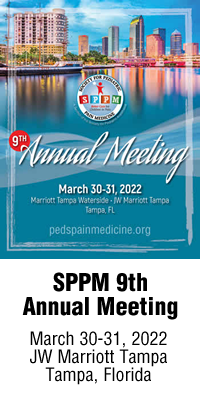Annual Meeting Reviews
Cryoablation for Post-operative Pain
By James J. Mooney, MD
Medical Director, Pain Service
Children's Healthcare of Atlanta
Emory Healthcare
Department of Anesthesiology
Emory University School of Medicine
Atlanta, Georgia
The first presentation, by Dr. Seth E. Eisdorfer, was “Cryoablation for Post-operative Pain”. Beginning with an explanation and history of cryotherapy, he provided a clear description of the mechanism (based on the Joule-Thompson effect) of its clinical use.
Dr. Eisdorfer then detailed the physiologic effects of cryoablation (freezing, thawing and subsequent apoptosis) as well as the factors playing into the results. After describing how the technique is performed, Dr. Eisdorfer provided a review of the data available, beginning with a summary. A more complete review of the literature followed, including a comparison to epidural that showed a decreased length of stay and decreased opioids, but requiring a double lumen tube for the procedure.
A meta-analysis of four observational studies and one RCT, including 196 patients, demonstrated decreased length of stay and decreased opioid consumption, but at the cost of increased operative time ( ~40 minutes). Dr. Eisdorfer then addressed the elephant in the room; the risk of neuropathic pain. Out of 30 pediatric patients it was not reported, while in the adult population it was seen in three of 13 patients, resolving in just over three months in those under 21 years of age. Dr. Eisdorfer then discussed an ERAS study, showing average length of stay was less than 12 hours, with only five of 15 staying until the next day.
The presentation closed with a discussion of an ongoing RCT at Children’s Hospital Colorado, comparing cryoablation to ESP catheters or PCA. Early data supports the superiority of cryoablation.




